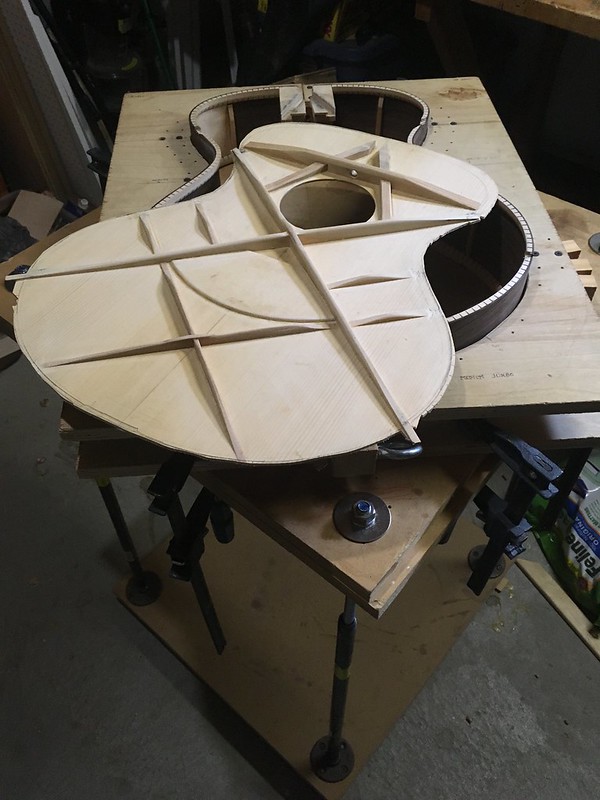The concept is good, but, as often happens, Gibson messed up in implementing it, IMO. I've been using a version of double-X bracing for some time, and find it works well.
If you use any version of 'tap tone' tuning on the 'free' top you're probably trying to get as many 'clear' tones as you can. It turns out that the clarity of the tap tones depends a lot on how well balanced the stiffness is from one area of the top to another, and in different directions. I use a 'tech' version of this called 'Chladni pattern' tuning, where you can actually see the way the top moves as it vibrates. Generally speaking, the more symmetric the patterns, the better the guitar ends up sounding.
Standard X bracing is asymmetric. If you flex the lower bout of the top across the two diagonals you'll find that it's much different between them. In one direction you have to bend the tone bars, while in the other you don't; all you have to bend is the top itself. Dana Bourgeois solved that problem to some extent by only scalloping the bass side of the X-brace.
Some years ago a student and I were discussing the issue, and agreed it made little sense to try to get symmetric vibration patterns from asymmetric bracing. A while after that one of my customers asked me to make him two guitars fir duet performances that had somewhat different sounds, but would still blend. I made a 'nearly matched' pair of small Jumbos, one with standard top bracing and the other with double-X. I made them as identical as possible otherwise.
I brought them to an ASIA Symposium and had folks try them out without telling them what the experiment was. One fairly typical response was from a very good maker who carefully tuned them up, and played some fingestyle, some chord melody, and some flatpicked music on both. When I asked which one they preferred it was the double X, by a little bit. When I told them about the bracing they exckaimed:"But that doesn't work!). I just shrugged.
The overall judgement of more than sixty guitar makers was that the double-X guitar was a little bit better; the vote was 2:1. Some mentioned that the standard braced instrument sounded more 'traditional', and the double-X more 'modern'.
I think that Gibson's main problem was using a top that was too thin, and bracing that was too heavy, particularly behind the bridge, and a massive plate. This works well with 'scalloped' bracing, although I usually use 'tapered' profiles: higher at the bridge and low at the ends. I took a scalloped braced double-X top to a workshop with Dana Bourgeois a few years ago, and he said thought it worked well. I was also able to test one of his asymmetric half-scalloped tops there, and found that it does, indeed, vibrate in a much more symmetric fashion, with clearer tap tones and better formed Chladni patterns.
I'll try to get up a picture of one of my tops.
|


